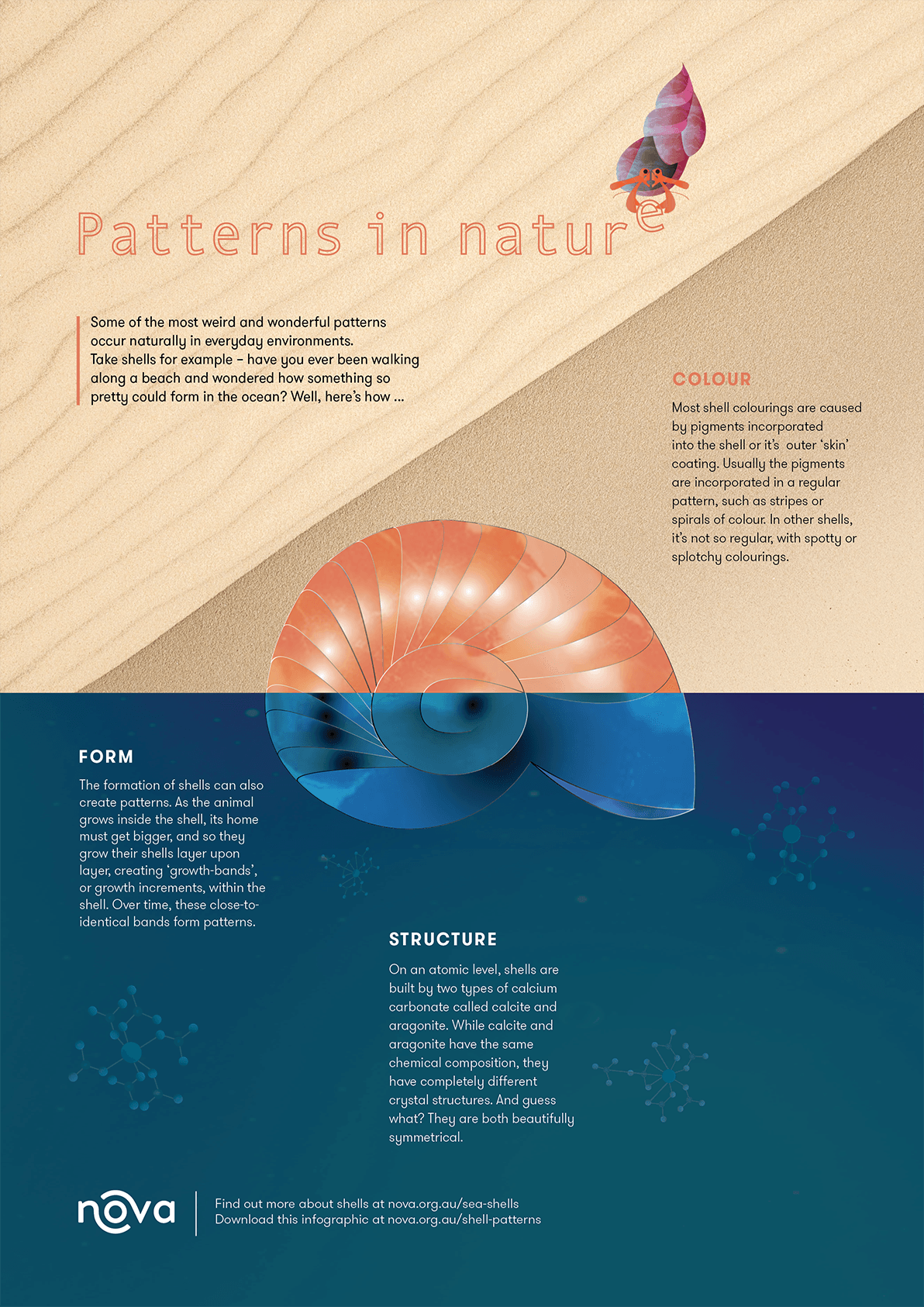- Home
- Infographics
- Shell patterns
Shell patterns
Welcome to the weird and wonderful world of shells.
Patterns in nature
Some of the most weird and wonderful patterns occur naturally in everyday environments.
Take shells for example – have you ever been walking along a beach and wondered how something so pretty could form in the ocean? Well, here’s how ...
Colour
Most shell colourings are caused by pigments incorporated into the shell or it’s outer ‘skin’ coating. Usually the pigments are incorporated in a regular pattern, such as stripes or spirals of colour. In other shells, it’s not so regular, with spotty or splotchy colourings.
Form
The formation of shells can also create patterns. As the animal grows inside the shell, its home must get bigger, and so they grow their shells layer upon layer, creating ‘growth-bands’, or growth increments, within the shell. Over time, these close-to- identical bands form patterns.
Structure
On an atomic level, shells are built by two types of calcium carbonate called calcite and aragonite. While calcite and aragonite have the same chemical composition, they have completely different crystal structures. And guess what? They are both beautifully symmetrical.






